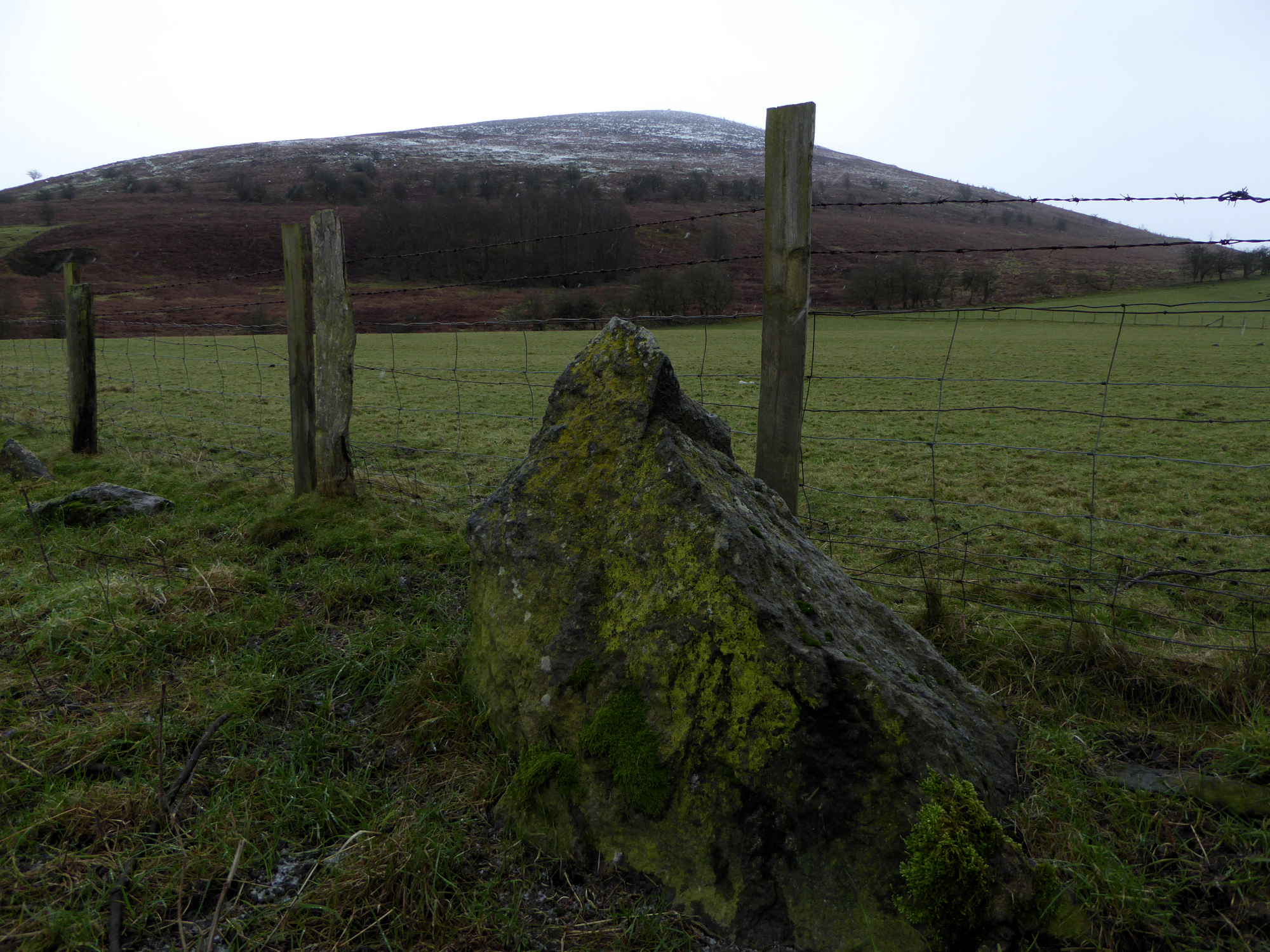
One of the sharper-edged stones. If this formed part of the circle it must have been bigger than it is now.

One of the sharper-edged stones. If this formed part of the circle it must have been bigger than it is now.

The stone on the right looked promising, its sides smoothed and rounded by wear. The others have sharper edges, which might be consistent with the breaking up of the circle stones in the 19th century.

Some of the stones in the fence, with Whetstones cairn in the next field. A horrible January sleet accompanied the visit.

Whetstones stone circle was hereabouts, beneath the northern slopes of Corndon Hill. There are some stones alongside the fence, middle distance. Could some of these have come from the circle? There are no other dry-stone boundary walls nearby.
The Whetstones (6 in. Ord. Surv. sheet, Mont. 31 S.E.; lat. 52 34 18, long. 30 1 42). Owner, the Earl of Powis, Powis Castle, Welshpool; occupier, Mr. Jacob Ellis.
At the foot of the northern slope of Corndon Hill, and close to a stile on the south side of the road near the turning to Cliffdale mine. It is certain that at this place there once stood a circle of eight or nine stones. An intelligent man named John Jones, aged 74 years, and a resident in the vicinity since his youth, remembers four stones arranged as though forming parts of a circle, with an appendage of four or five other stones extending in a curve “like a hook.” About one hundred yards distant was a cairn, the foundation of which is still discernible. The land was then unenclosed, but on its enclosure the cairn and the circle were rifled to provide stone for the construction of the existing fence. Mr. Jones pointed out the four stones which had been members of the circle.
The Rev. C. Hartshorne’s account of this circle in Salopia Antiqua, 1841, p.33, gives a slightly different account of the stones. He observes “these three stones [The Whetstones] were formerly placed upright though they now lean, owing to the soft and boggy nature of the soil. They stand equidistant and assume a circular position... The highest of these is four feet above the surface; one foot six inches in thickness, and three feet in width.”
Only one stone is now to be found, embedded in the ground close to the stile entering the field, and this is so small that it is not likely to have formed one of the stones of the circle, or it must be a mere fragment of a larger mass. Close by, but within the borders of Shropshire, is the still perfect circle called Mitchell’s Fold. -- Visited 29th August, 1909.
From the ‘Inventory of the Ancient and Historical Monuments of the County of Montgomeryshire’ (1911).


























































